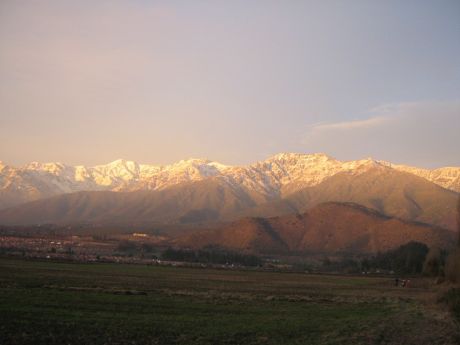Novel methods to extrapolate ancient climatological conditions

Chilean_Andes
User: Penarc at wikivoyage shared [GFDL (http://www.gnu.org/copyleft/fdl.html) or CC BY-SA 3.0 (http://creativecommons.org/licenses/by-sa/3.0)], via Wikimedia Commons
New techniques to establish the warmest and coldest periods in recent millennia are helping to update and modernise climatological data.
The Chilean Andes represent an ecologically precious region with diverse
climate pressures. The region lacks key climatological data that can
help predict long-term weather patterns, a challenge that the EU-funded
project CHILE1000 (Chilean lake sediments as archives for climate
variability during the past 1 000 years) helped to address.
Aiming to outline quantitative summer and winter temperature reconstructions for the Chilean Andes over the past 1 000 years, the project sought to present this pivotal information in a wider spatial, temporal and climatological context. This is especially important since not enough studies have been conducted on the lakes in the region, depriving researchers of valuable palaeontological data.
Using a number of new techniques, the project team produced the first-ever high-quality training set in South America for specific lake sediment spores known as chrysophyte stomatocysts. This involved the use of sediment traps and thermistors to obtain water chemistry and temperature analyses, resulting in 47 ecologically relevant environmental parameters for 24 lakes.
Subsequently, the team cross-referenced the chrysophyte stomatocyst assemblages with environmental parameters using advanced statistical analyses, representing a very accurate indicator of past winter conditions. It then extrapolated past winter-spring conditions as far back as 160 AD for Laguna Escondida, a very isolated lake in the Andes.
Interestingly, the project team found that recent cold season warming in this region during the last 40 years is not unique within a 100- or 1 000-year context. Although clear signs of warming were observed after 1980 (a trend that continues today), examples of such warming had already been seen in the last 100 years. This contrasts with records from the northern hemisphere, emphasising the importance of reconstructions based on geographical and seasonal variables.
Project achievements also include a highly detailed summer temperature reconstruction for Laguna Chepical, a glacial lake in the central Chilean Andes. The project's research results in this case have shown that the warmest period within the past 3 000 years occurred quite recently, between 1950 and 1970.
Overall, CHILE1000 helped refine technological innovations in the field and ascertained the role of chrysophyte stomatocysts as a reliable, quantitative proxy. It provided a training set for scientists and students that employs cutting-edge field techniques and statistical analyses. These positive results were highlighted in several reports and journals, contributing to palaeontological and climatological science on a global scale.
published: 2016-03-03

